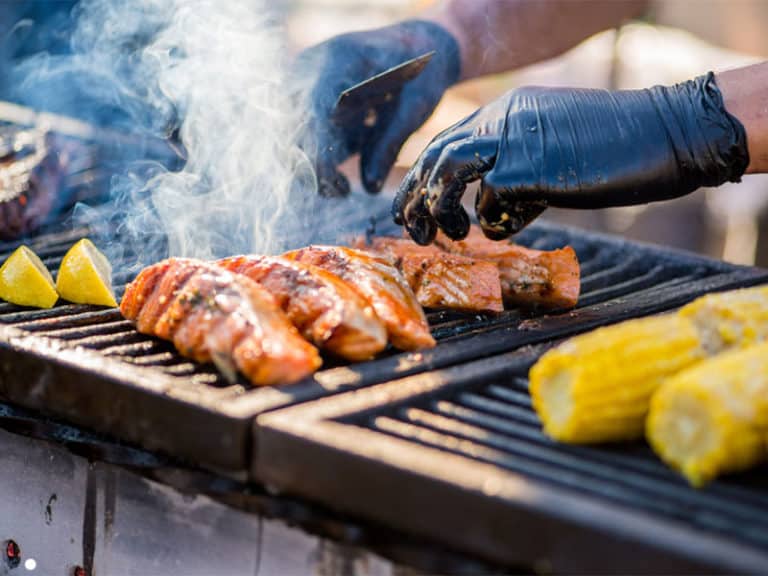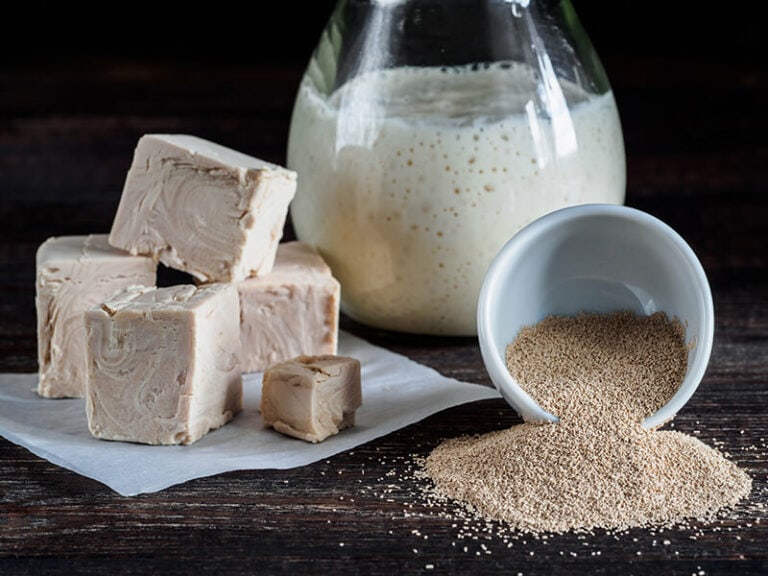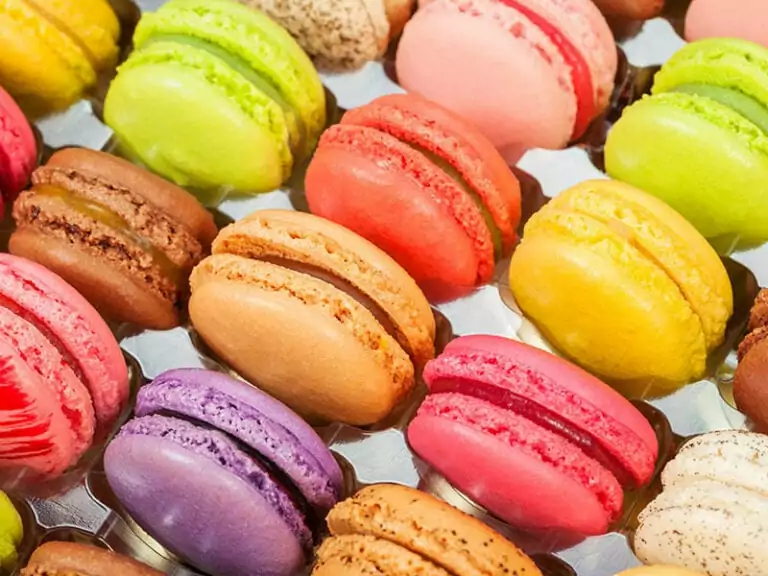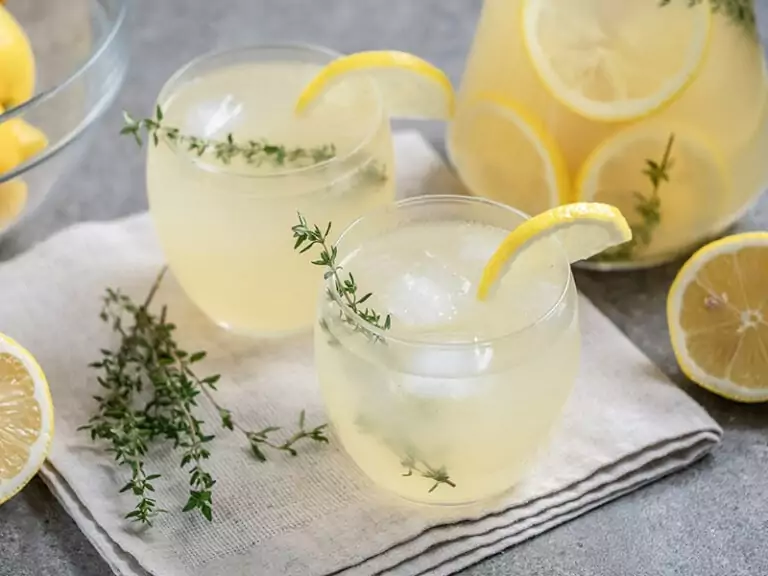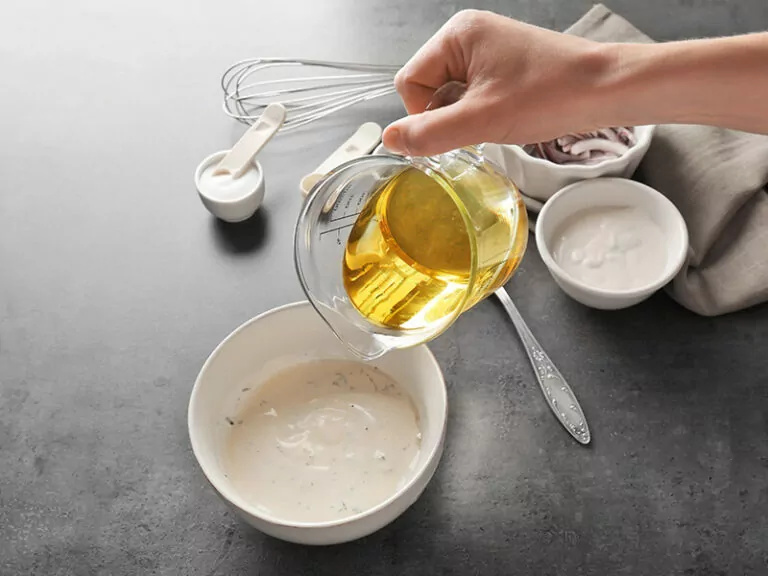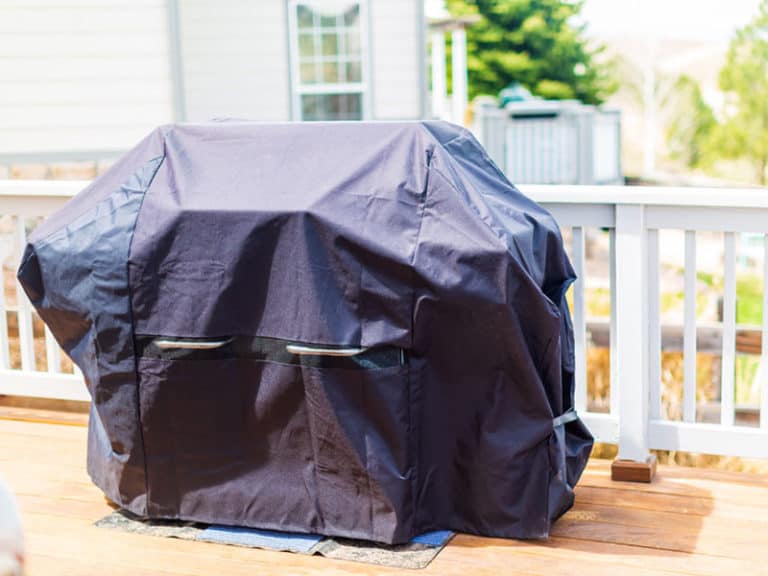It’s easy for outsiders to assume that there is only one type of chef in any kitchen. In fact, any kitchen, whether a small local restaurant or a 3-star Michelin restaurant, operates according to a hierarchy with many positions, in which a chef is the leader of the operation.
That makes people wonder, “What are the different types of chefs?”. To answer this question, you have to understand what chefs do in a kitchen. They don’t only do a single task of cooking food since there are other works to be done to run a kitchen smoothly.
Let’s find out what makes differences between various kinds of chefs and what they do in a busy commercial kitchen.
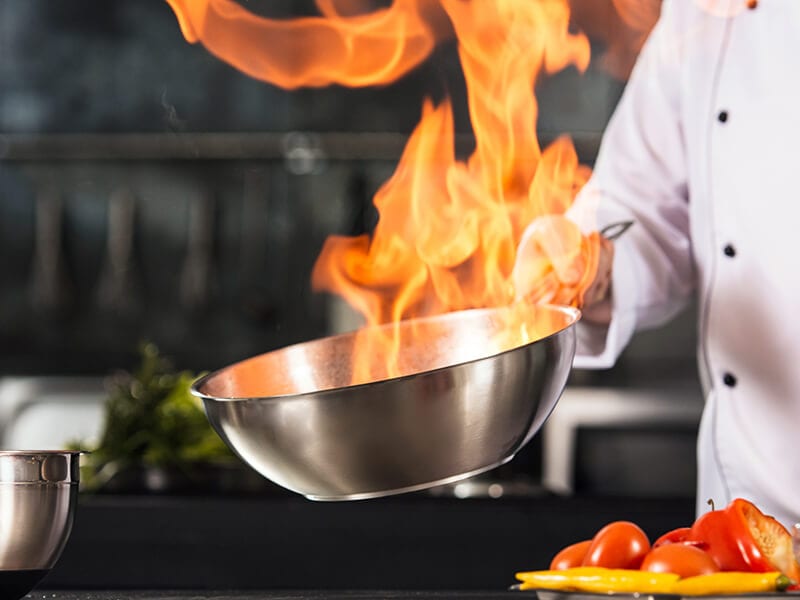
Everything You Need To Know About Chefs
Most people know about chefs from TV shows with their fancy cooking skills and ability to deliver extraordinary dishes in a matter of minutes. In reality, being a chef is more than exhibiting skills and cooking good food.
What Is A Chef?
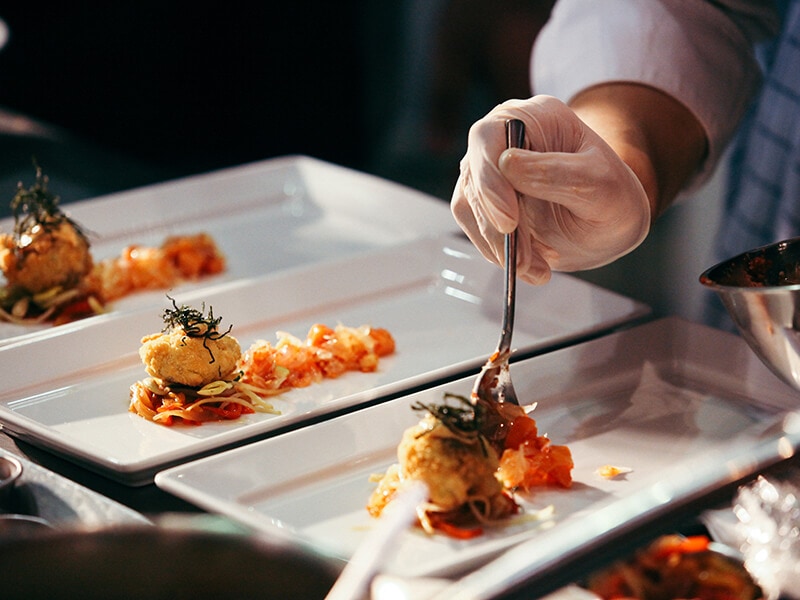
A chef is an all-rounded position that can cover a lot of work in the kitchen to ensure the kitchen runs smoothly (1). They can be a chef solely or as a chef and a businessman (a restaurant owner) with professional training to lead a food service operation.
The word chef is derived from the term “chef de cuisine” in French, which means the director of a kitchen.
The chef’s task doesn’t stop at food preparation. Some chefs have other specific tasks in the kitchen that don’t involve cooking.
How to become a chef in a Michelin restaurant? Here is the answer.
History And Evolution Of Chefs
In the 14th century, war was the main theme in Europe. Armies had to march very far from home to fight on different battlefields. Food has always been a number one concern of any army, so generals picked men from the ranks to cook for the entire army.
During times of peace, military cooks followed knights to the castle and were hired by kings or nobility to orchestrate large meals and banquets.
They began to form guilds and adopt uniforms that included double-breasted white jackets. They strictly follow brigade hierarchies to run the operation. After the French Revolution, restaurants and cafes spring up like mushrooms to serve the elites.
Brigade System In Kitchen
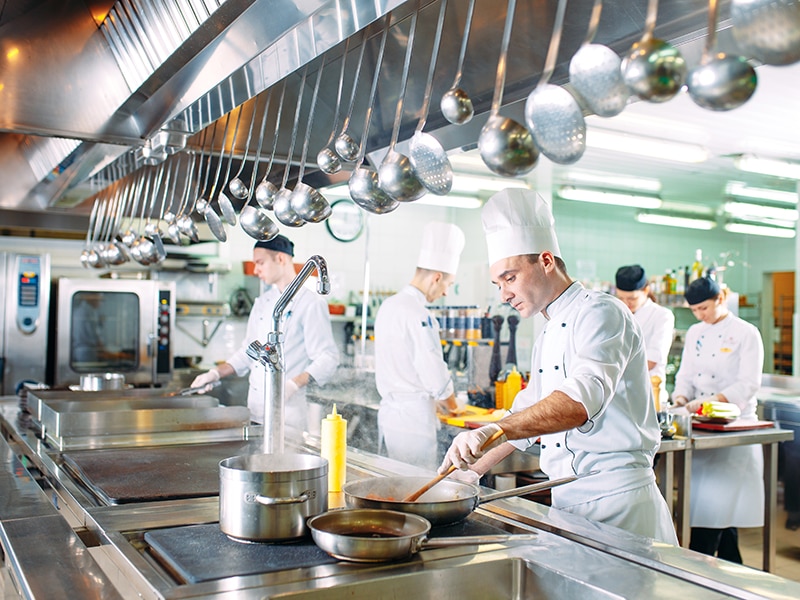
The modern brigade structure that modern restaurants are still applying today was created by the legendary chef Auguste Escoffier, commonly known as “the king of chefs’ (1846-1935). He created this hierarchy system to help kitchens run effectively.
The purpose of this system is to assign each cook and staff a specific purpose so that all stations work in smooth coordination and efficiency. With the development of automation, many original roles in the brigade system have been made redundant.
Moreover, some people think that the French Brigade System is out of date since it holds some stations less important than others.
The truth is they contribute equally to the successful operation of a restaurant. People see this system as a basic outline to manage their kitchen.
A quick view of a field kitchen in WWII that you should check.
Types And Roles Of Chefs
According to the hierarchy, various titles are granted to people with professional training and working in the kitchen. Chefs are the positions that are the most respected in the kitchen, regardless of their roles. Each has their specific duties.
1. Head Chef (Executive Chef)
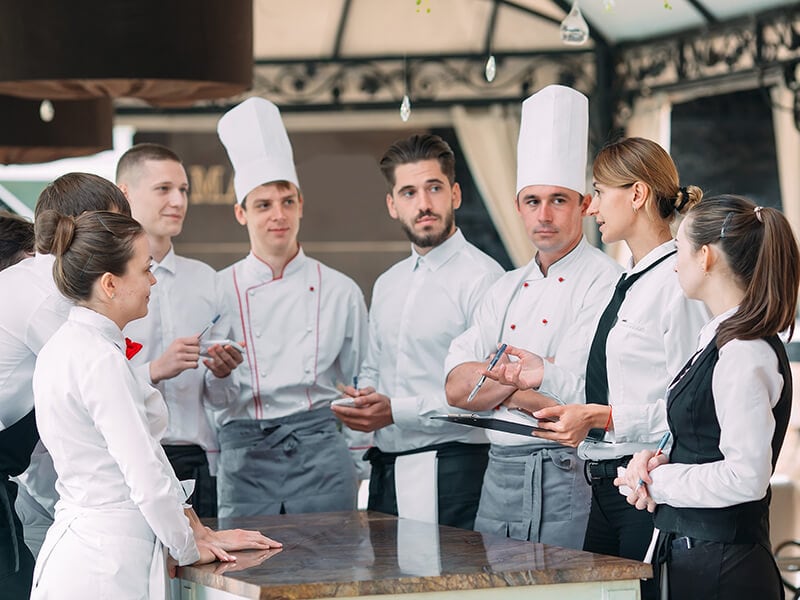
Like a manager in other fields, an executive chef is a highest-ranking position in the kitchen. The main job of this chef is to supervise all other staff working in the kitchen, plan the menu, restock items, and assess the quality of dishes before serving.
Working as a head chef requires not only proper training in many fields but also years of practical experience in the kitchen. Most of the time, a head chef doesn’t cook.
Only in a small establishment does a head chef usually have tasks that involve cooking. There is usually one sous chef at any restaurant.
2. Sous Chef
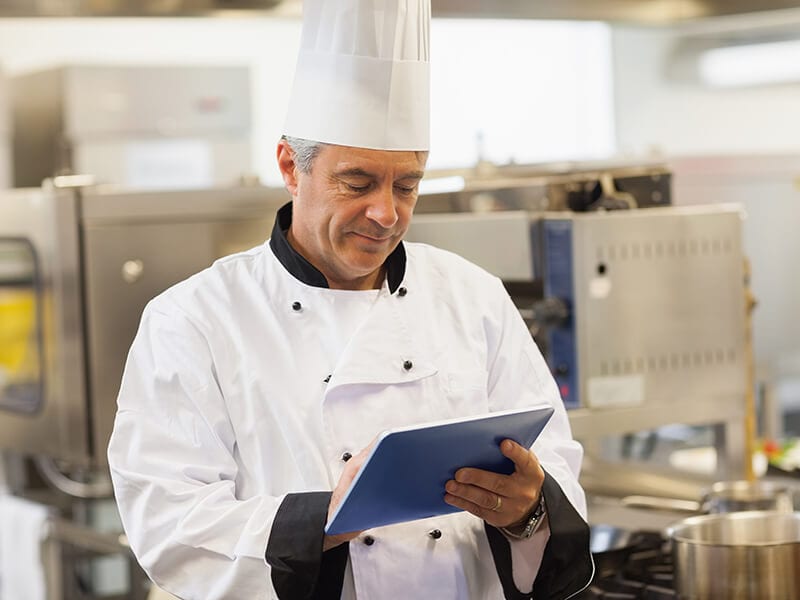
Sous chef means under-chief in French. They are above any other chefs in the kitchen. A sous chef works closely with a head chef and reports directly to them. Sous chefs weren’t created; they earned it.
Before getting promoted to sous chef, they worked their way up through many positions and mastered the necessary skills to make all the dishes on the menu. They are also proficient in cooking equipment and sometimes can fix them in an emergency.
A sous chef helps the head chef run the restaurant smoothly. Their job includes ordering ingredients for the kitchen, training new staff, managing inventory, and keeping cooks on task.
They are also responsible for the performance of the staff, reporting directly to the head chef. They carry out the commands from the head chef, check out stations, and supervise all food products. It might ask for more than one sous chef in large establishments.
If you want to become a sous chef, you should know what a sous chef has to do every day.
3. Senior Chef/ Chef De Partie (Station Chef)
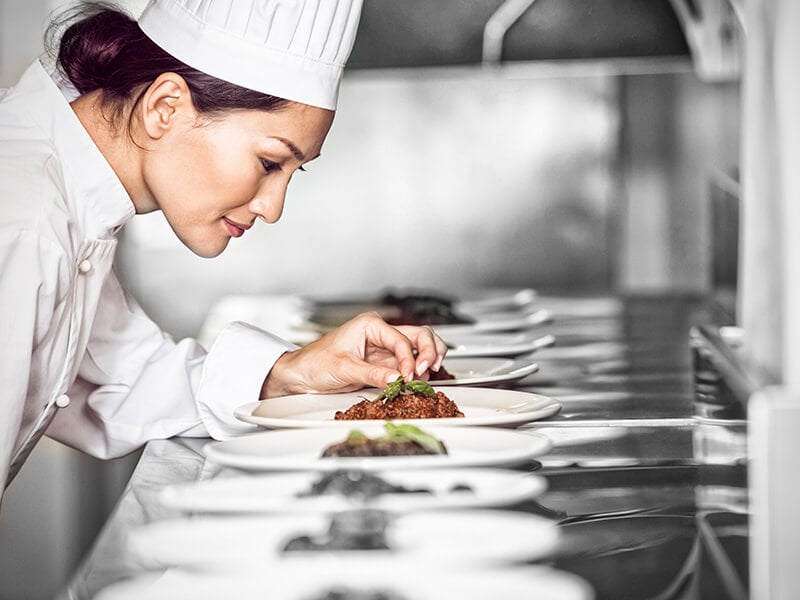
A senior chef is a person who deals with a particular station or line in the kitchen. They are also called a station chef, chef de partie, or line cook.
Most senior chefs have to work their way up to this position. Some receive their formal culinary education in school. But in both cases, they have to earn experience in the real kitchen before becoming a senior chef.
In a large establishment, a kitchen operates under the head chef in several departments called stations or lines, such as butchery, vegetables, sauces, and pastries. Each senior chef is assigned to cook and prepare the food that belongs to their station.
4. Pastry Chef (Patissier)
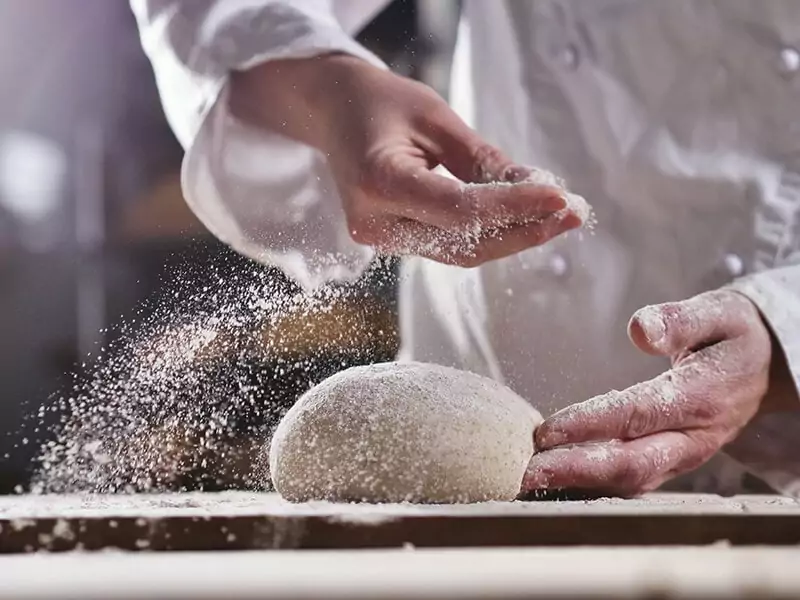
A pastry chef is one of the station chefs and specializes in making baked foods, including chocolates, cakes, candies, bread, pies, and so on. This particular position can make their own decisions and is not abided by other chefs.
They are the most senior in the pastry station and also have specific roles(2):
- Boulanger (baker): work with bread, breakfast pastries, and cakes.
- Confiseur (confectioner): work with candies.
- Decourateur (decorator): work with specialty cakes and decorations.
- Glacier: work with cold and frozen desserts.
Pastry chefs usually had to work hard to reach this position. From bakers or regular cooks to leaders of a major department in the kitchen, all thanks to their creativity and performance.
Pastry chefs’ skills in each place are different from the others because of the place of work. For example, some pastry chefs are excellent at making baked goods, while others make killer candies.
5. Vegetable Chef (Entremetier)
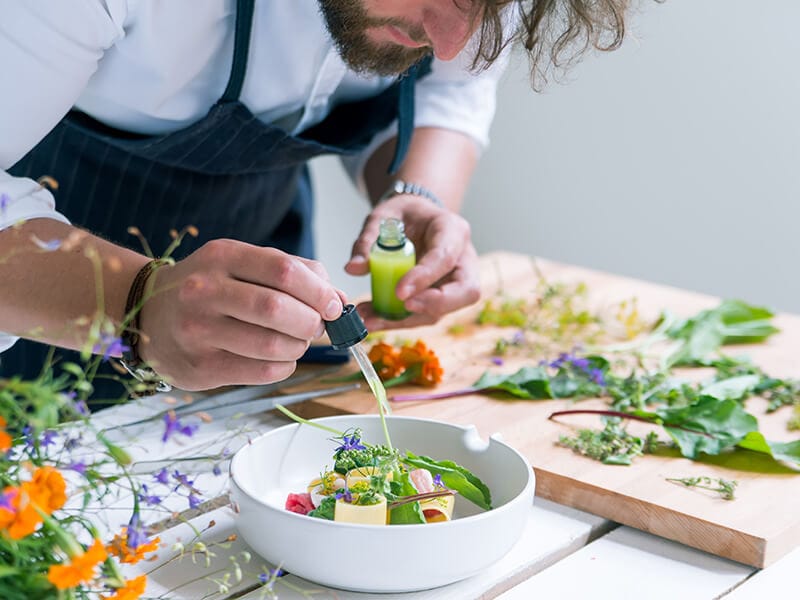
Vegetable chefs or entremetier chefs are in charge of vegetable stations, which deal with all kinds of vegetable dishes. They prepare vegetables, soups, starches, and eggs. They also decide which is the best way to cook veggies, such as steaming, boiling, or sauteing.
Other duties include developing new veggie dishes for the menu, creating sauces to go with them, or finding ways to implement these greens into dishes.
Unlike other stations run by a single chef, the entremetier station might need two vegetable chefs. This is due to the amount of work and the versatile nature of vegetable cooking.
A potager chef is the one who cooks and creates soup dishes for the menu, while a legumier deals with other types of veggie dishes.
6. Meat Chef (Rotisseur)
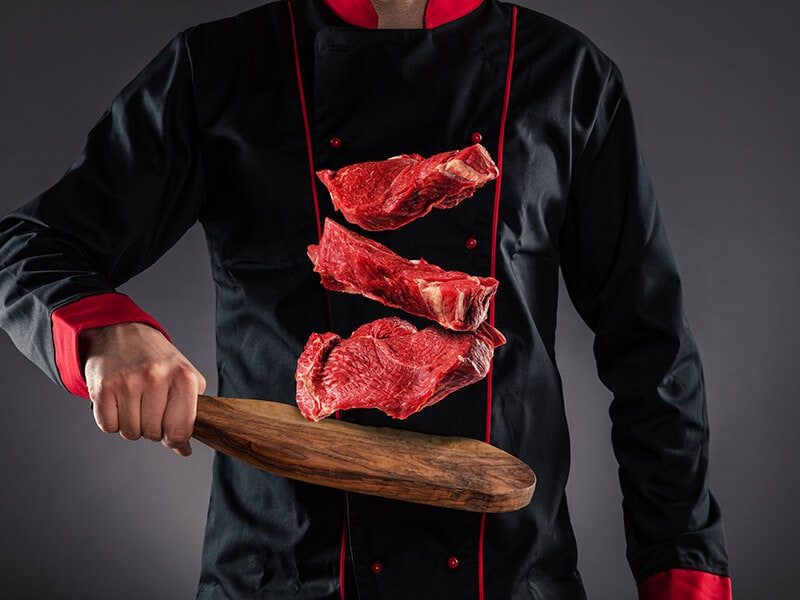
As the name “Rotisseur” suggests, a meat chef, or roast chef, is in charge of roasting and braising meats. In modern times, their duty goes beyond that definition; they are also in charge of all meat-related dishes and purchasing meat from retailers or suppliers.
A meat chef excels at determining the best meat parts for different dishes, ensuring all meats on the menu are done correctly. They also create savory sauces for meat dishes. There is usually one meat chef at any restaurant, but it also depends on the menu size.
7. Fish Chef (Poissonnier)
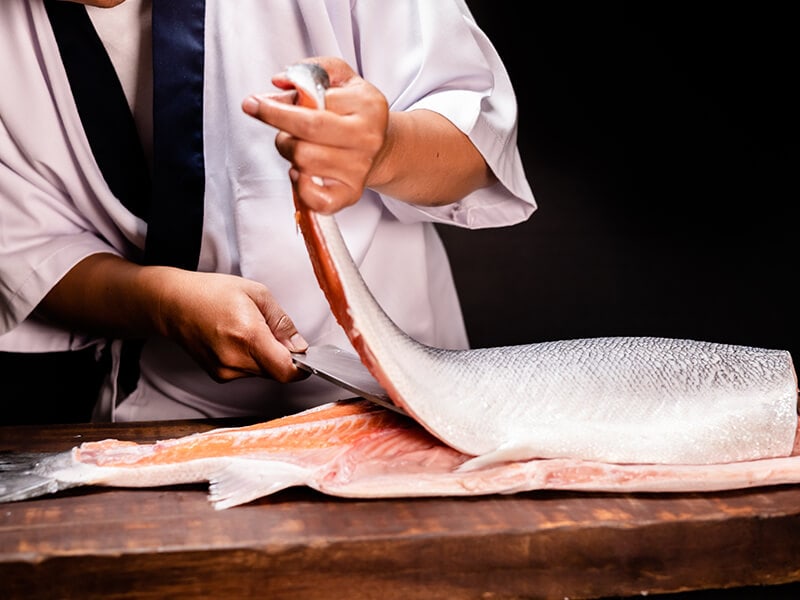
A fish chef is in charge of preparing all the fish-related dishes in the kitchen. Their understanding of many kinds of fish enables them to pick the freshest fish from local fishermen and merchants, and decide which fish should be on the menu each season.
The most prominent skill of a fish chef is their cutting skills. As fish are more fragile and difficult to process, the chef has to understand the anatomy of the fish and use their knife-wielding skill to cut the fish without damaging its content.
Fish chefs can fry, roast, sear, and saute fish. In some cases, fish chefs have specified training in making raw fish dishes like sushi or poke.
How does a fish butcher do? Let’s see a chef perform her great knife skill through this clip.
8. Fry Chef (Friturer)
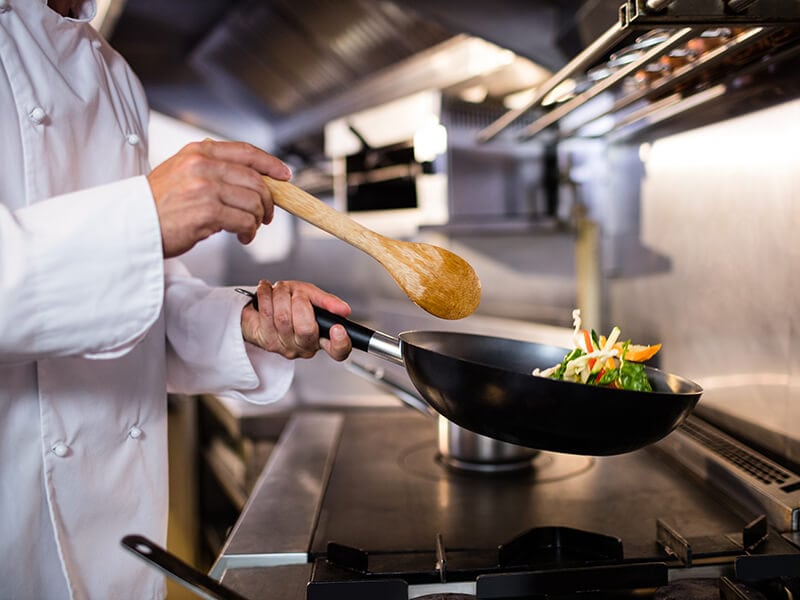
Fry chefs are responsible for the preparation of any foods that are cooked with oil or animal fats. They use a fryer or a stove to fry the food, ensuring it is well-breaded and fried. They also create sauces for fried dishes.
Their task may include doing the prep work such as battering, breading, or freezing different food before frying. They also control their cooking time and clean their station.
9. Grill Chef (Grillardin)
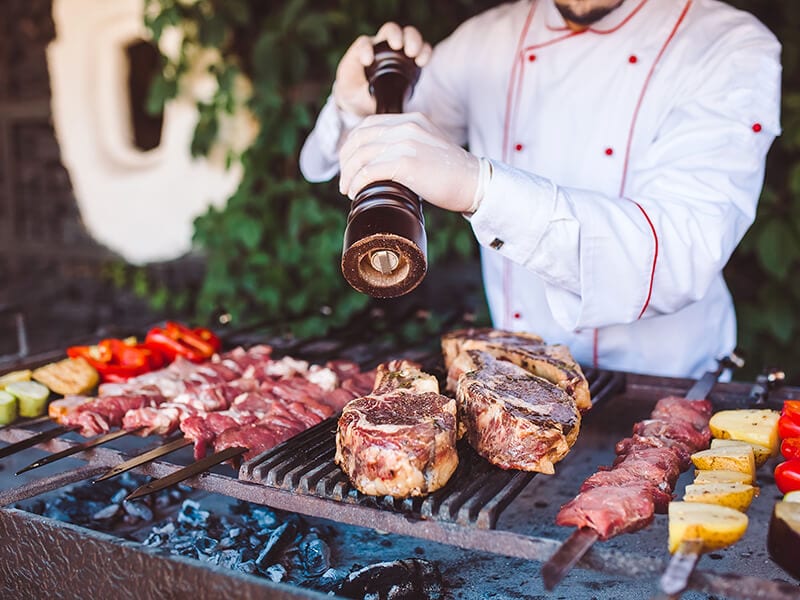
As in the name, grill chefs handle grilled foods, including meat, poultry, and vegetables. They are good with grilling and know how to make foods rare, medium, or well done. In a smaller kitchen, this role is assigned to Rotisseur (meat chef).
This chef will work closely with the butcher chef to choose the best meat cuts for each dish.
10. Sauce Chef (Saucier)
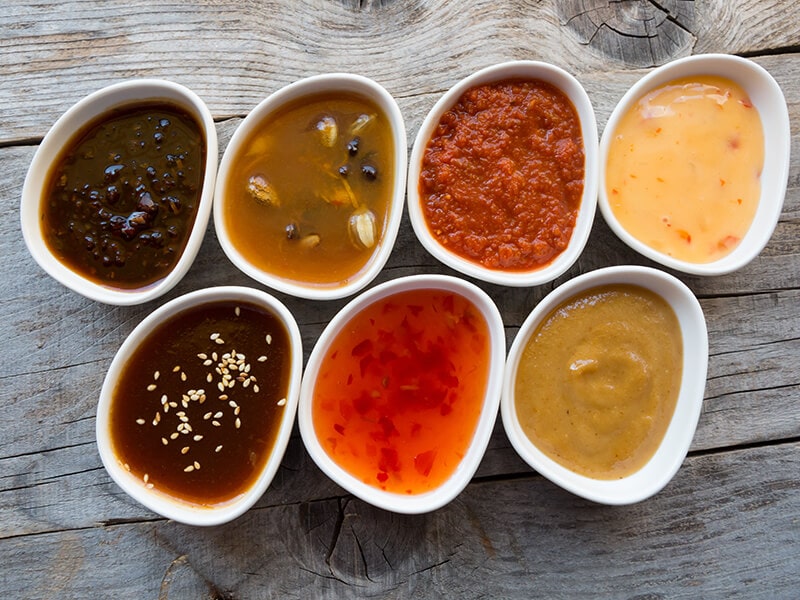
This typical position is usually found in French kitchens, and it is the third-highest in command under the head chef and sous chef.
A sauce chef handles all kinds of sauces served with specific dishes. They also handle salad dressing, gravy, stew, stock, and pasta sauce.
Since adding sauce is the final step of preparing, a saucier is also responsible for the presentation of the dishes before serving.
11. Pantry Chef (Garde Manger)
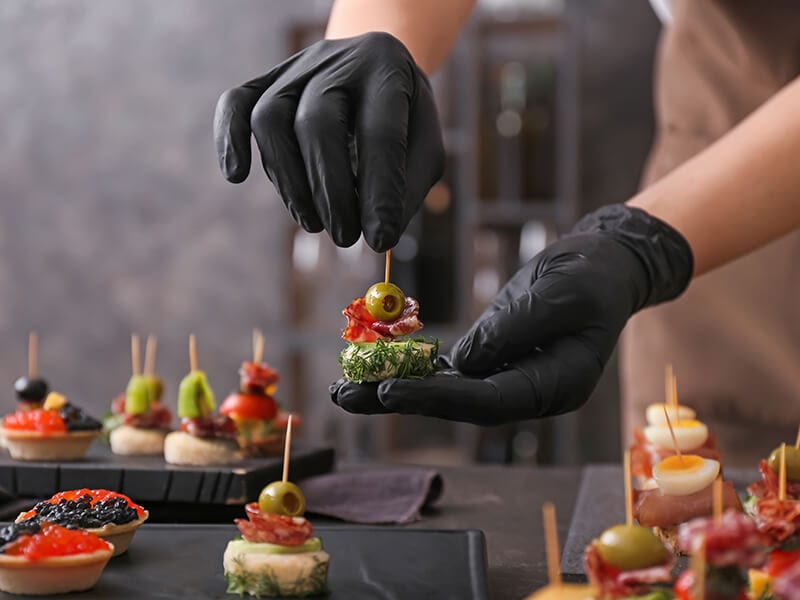
Pantry chefs specialize in the preparation of cold dishes such as salad and cold appetizers like pate, cheese spreads, or tartars.
They are good at decorative tasks in buffets, using vegetables and ingredients for garnish. Ice carving is a unique skill that pantry chefs know.
They also manage the stock in the freezer and fridge. In large restaurants, this task is very important and requires a specialist to monitor supply and keep the foods in perfect storage conditions.
12. Butcher Chef
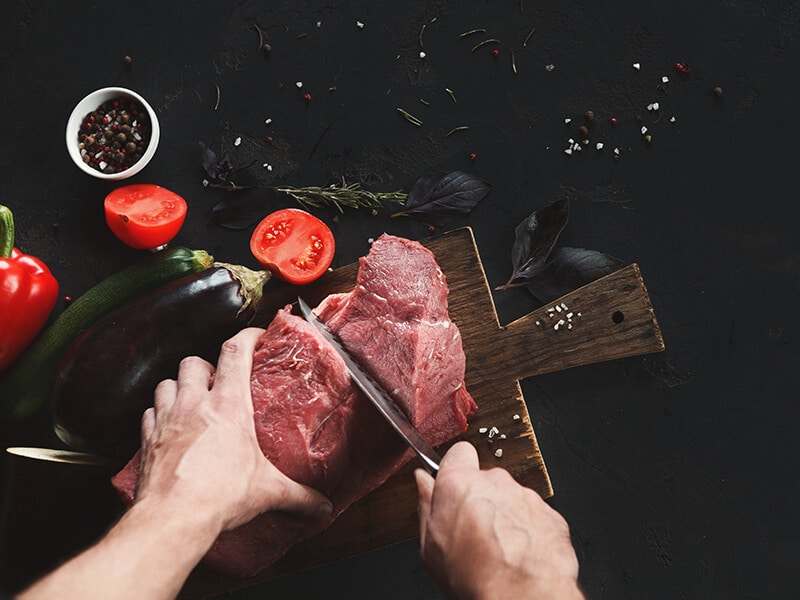
The job of this chef is to prepare the meat before it goes to other stations for cooking. Their vast knowledge of meat and meat cuts enables them to choose and prepare the right meat for the shift.
They also have to manage meat inventory, examine the quality of meat on delivery, and choose the right way to store meat. In some smaller kitchens, the meat chef will be in charge of this role.
Types Of Cooks In The Kitchen
Cooks are people working under chefs to do specific tasks for cooking. Some cooks are apprentices to learn cooking skills. Here are some types of cook:
1. Prep Cook/ Kitchen Hand/ Kitchen Assistant
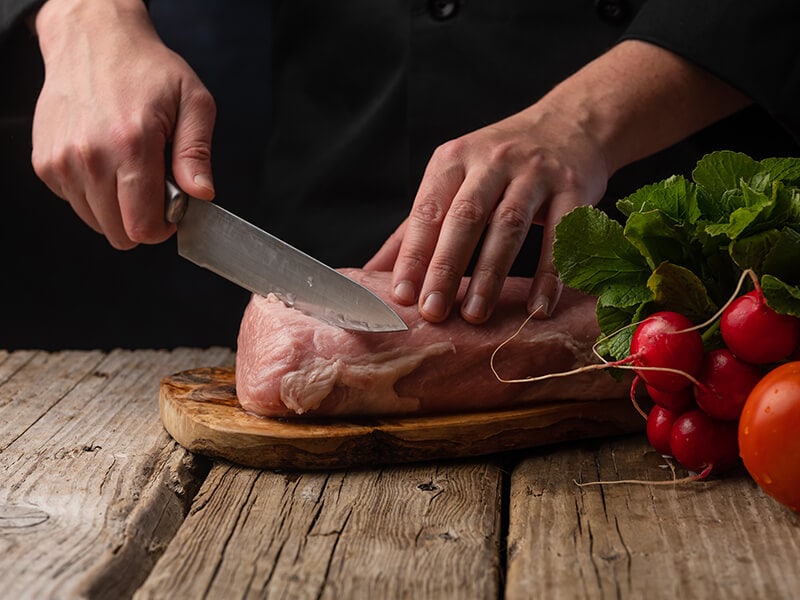
Prep cooks do all the preparation steps before the kitchen begins to work. They show up earlier than other chefs to make ingredients ready for cooking.
These tasks include cutting vegetables, defrosting and washing ingredients, or making easy dishes like baking bread.
2. Commis Cook
A commis chef is an apprentice who other chefs take under their wings to teach about kitchen tasks and responsibilities. They will learn different cooking styles from other chefs in the kitchen.
They don’t have a specific duty since they work in command of senior chefs. Their versatile tasks include taking orders, finishing dishes, or preparing ingredients.
3. Relief Cook (Chef de Tournant)
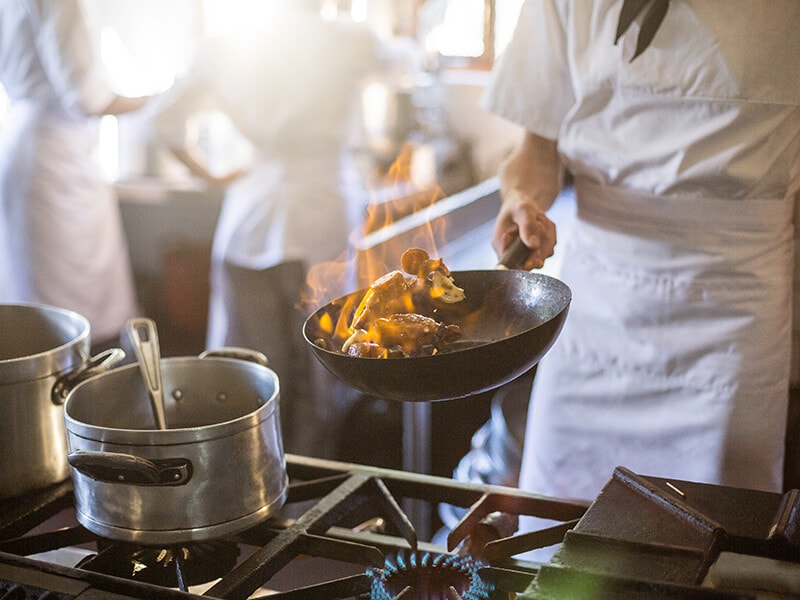
This is an all-purpose chef that swings around the kitchen to help overwhelmed stations, assisting in any task undone. They usually have broad basic knowledge about the operation of every station.
They are ready to step in when a station chef is sick or when a station is caught in an incessant workload.
4. Short Order Cook
This position deals with quick and simple meals in the tickets such as salad, sandwiches, or simple drinks as fast as possible. There are usually 1-2 short-order cooks in a kitchen. They are also responsible for managing food quality standards.
5. Expediter
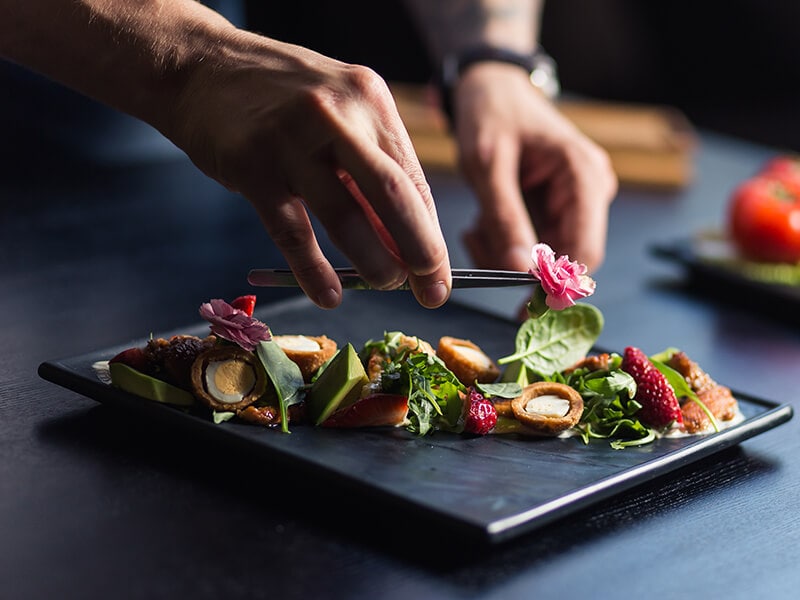
This position is a cook. They are in charge of plating before the dishes get served to the customers. They ensure dishes have a correct presentation and double-check the needed elements like toppings and spices before delivery.
They also help organize the tickets to make sure special requests reach the chefs. In a smaller kitchen, the head chef will take on this task.
Differences Between Chef And Cook
The first thing that sets a chef and a cook apart is their positions in the kitchen. All chefs hold high-ranked positions in the kitchen, while cooks are considered kitchen staff. Chefs have a higher salary than cooks for their responsibilities.
Moreover, chefs are in charge of various managerial works. Their responsibilities involve matters inside and outside of the kitchen. For example, they not only have to come up with the menu but also deal with vendors for better and cheaper ingredients.
On the flip side, the main task of a cook is cooking. They use their talents and experience to deliver savory and delicious foods to serve the customers.
FAQs
You have learned many things about systems in commercial kitchens and how chefs work there. There is more knowledge about this interesting career for you in these valuable queries.
A Chef’s Career Is Not An Easy Path!
A commercial kitchen is a very harsh and fast-paced working environment. Chefs, cooks, and staff are equally important to keep a restaurant functioning properly.
To become a chef, one must undergo years of training and acquire experience. Don’t be afraid to start from the bottom. Find an area you can be good at, and pursue it enthusiastically.
Before you leave, comment your thoughts on the chef career in the comment section. Don’t forget to like and share this article for people who love a culinary career.
Reference
- Chef (2022) Wikipedia. Wikimedia Foundation.
- Pastry chef (2022) Wikipedia. Wikimedia Foundation.

